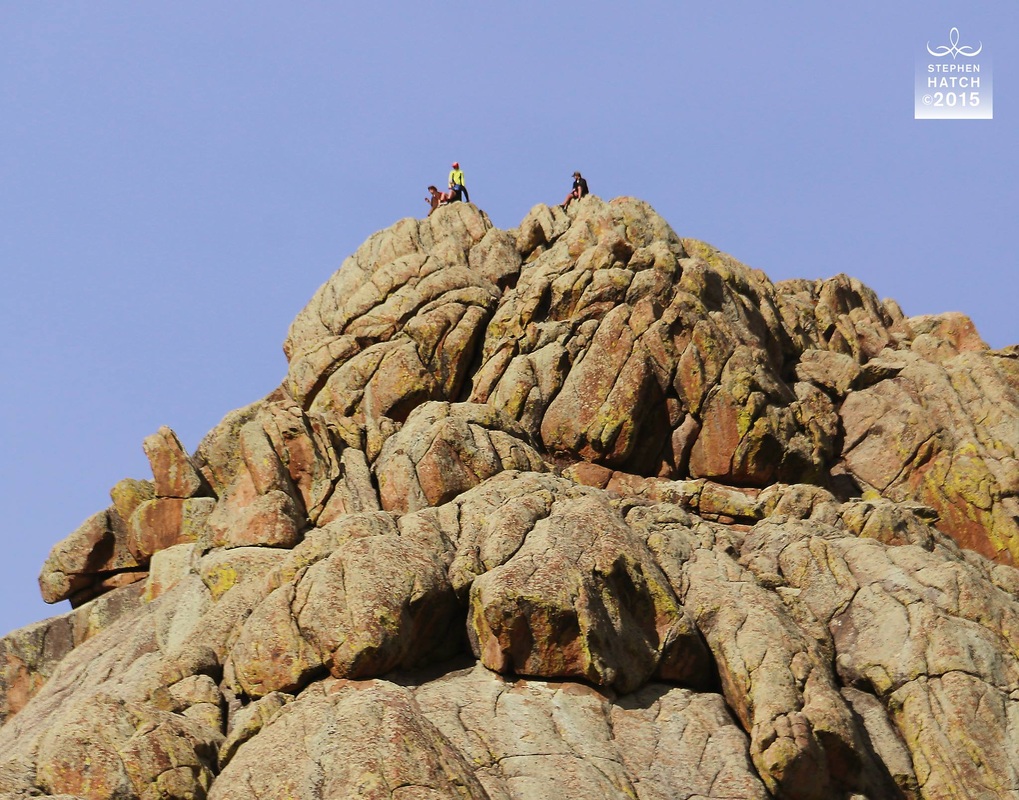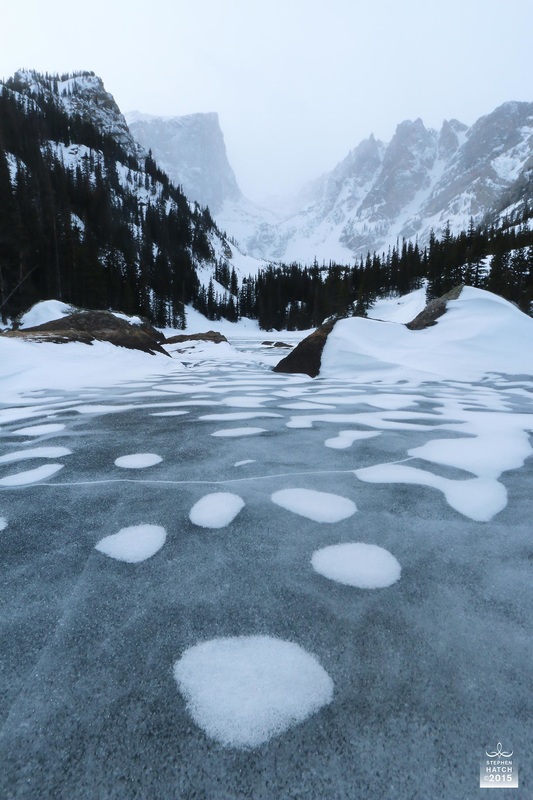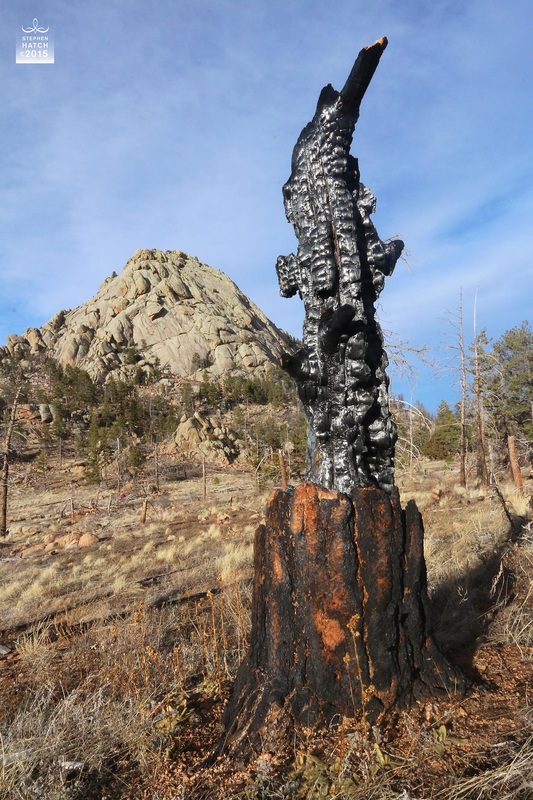|
"Do not be too timid and squeamish about your actions. All life is an experiment. The more experiments you make, the better. What if they are a little coarse, and you may get your coat soiled or torn? What if you do fail, and get fairly rolled in the dirt once or twice/? Up again, you shall never [again] be so afraid of a tumble." Ralph Waldo Emerson Photo: Hikers on the summit of Greyrock, Poudre Canyon, CO, February 27, 2016 For Spiritual Direction or Workshops, please visit: http://www.resourcesforspiritualgrowth.com/
0 Comments
One of the least recognized spiritual principles in the world today is the fact that absolutely EVERY religion and spirituality, no matter how true, has its shadow side. And this includes, of course, our own tradition. We all choose a particular spiritual path because we believe it possesses the least falsehoods and the greatest number of advantages, but the truth is that it is actually quite incomplete, just like every other philosophy and world view. For example, something deep inside my being has chosen the path of mysticism for the past 35 years. A deepening awareness of the unity of all things is of course a major feature of this path, one that I appreciate very much. However, because so much time and attention is put into contemplation, silence and pondering, this path sometimes falls short with regard to activism. Similarly, the Protestant Radical Reformation / Contemplative Spiritual / Invisible Church / Priesthood of All Believers / Wilderness Mysticism tradition that I follow - and have had a part in creating - is wonderful for the way in which it values the spontaneous leading of the Holy Spirit and the sacredness of the individual. However, it often can be a lonely path, and it entails a life-long struggle to make one's work better known in the quest for making a decent living. This contrasts with institutional religion, which often has a tendency to become rigid, stultifying and fossilized, but which provides greater opportunities for making a living. I try to impress this principle of the simultaneity of positive-and-negative-traits on my students, but it is an especially difficult point to get across in an academic milieu where many of the students view Christianity as the source of all the world's problems, and Eastern Religions as a panacea of truth and enlightenment. In my teaching, I try to show how Christianity - including Christian Mysticism - possesses both positive and negative elements, but I'm unclear whether or not Buddhist or Hindu or Taoist spirituality is taught in this manner as well. The tendency in our society - among more liberal-minded people, anyway, is to compare the WORST of Western Religions with the BEST of Eastern Religions. How fair is that? In addition, I try to emphasize the fact that just as we readily criticize the religious systems that arose out of previous eras - especially in the West - future generations will criticize US just as readily. They will look, for example, at our religious traditions' failure - both East and West - to adequately address the unethical practice of animal testing, the fact that our clothes are made in overseas sweatshops, our pollution of air and water, a corporate-industrial culture that effectively discourages the survival of independent business, and our hectic lifestyle - and they will wonder what the hell we were thinking! The fact that our own spiritual tradition has its flaws is not, I'm convinced, a fact to be bemoaned. For it means that we will always and forever need the insights and perspectives that OTHER traditions provide, and vice versa. The shortcomings of our own path are precisely the "glue" that cements us together with all of the other spiritual traditions and philosophies. Besides, wouldn't it be BORING if we actually "had it all together"? It is so wonderful to open up and learn from others, and to revel in the wonderful magnetic energy that forever circulates between us and various other spiritual traditions. That is, after all, what Life is all about! Photo: Burned Ponderosa Pine and Greyrock, Poudre Canyon, CO, February 27, 2016 For Spiritual Direction or Workshops, please visit: http://www.resourcesforspiritualgrowth.com/ "Wilderness provides a place to contemplate and try to understand our place in the world, an antidote to the confused state of mankind in this atomic age." Olaus Murie Wildlife Biologist and Wilderness advocate Photo: Snow patterns on Dream Lake, Rocky Mountain National Park, CO, February 22, 2016 For Spiritual Direction or Workshops, please visit: http://www.resourcesforspiritualgrowth.com/ Over the past year, I've dealt with quite a bit of depression over the fact that working as an adjunct professor - despite the fact that I am incredibly passionate both about teaching and about the specific course I teach - means that I receive very little attention or respect compared to full-time faculty at the institution where I teach. And this, of course, is not unique to my university. It is the story at universities across the U.S., no matter how wonderful, ethical, or "spiritual" they may be. Did you know that, on average, 51% of the instructors at U.S. universities are adjuncts? At the university where I work, the number rises to 70%. However, where I teach, a large percentage of the students' favorite instructors are adjunct professors. This is, I believe, because we work not for the money, but because we are passionate about the teaching itself. In one national survey, 57% of adjunct instructors reported that "I teach because I enjoy it; compensation is not a major consideration." At my university, this is true as well because we adjuncts are passionate about the subjects we teach, many of which contain a profoundly spiritual component. As adjuncts, we receive no health insurance, no office, and low pay. The national average for an adjunct instructor is $2700 for a three-credit semester course. However, I - like many professors at my university, both adjunct and full-time - view my teaching as a sacred responsibility to the students. In addition to giving myself fully and enthusiastically to each class period, I make a point of meeting for coffee with every student at least once during the semester. During that time, I ask them to tell me the story of their own spiritual journey, and I am always in awe at the intelligence, motivation, sincerity and compassion they express during these sessions. This week it really hit me what a privilege it is to teach at an institution that is oriented toward a contemplative education. In this regard, my university is unique in the nation, and most probably in the world. If I left my position, there would perhaps be a thousand other instructors just dying to take my place. I believe it is always a good idea to count our blessings and to ask strength from the Creator to continue passionately carrying out our sacred calling. Even if society does not value us by conferring upon us fame, status, or financial compensation commensurate to our calling, I KNOW that THE CREATOR still values us. And, in my field - based on my experience with six years of college-level teaching - I would say that THE STUDENTS do as well. Photo: Burned tree, Hewlett Burn, Poudre Canyon, CO, February 27, 2016 For Spiritual Direction or Workshops, please visit: http://www.resourcesforspiritualgrowth.com/ Yesterday, while reading a book entitled "Restless Souls" on the history of American Spirituality, I was struck by how often the author makes the point that our society throughout the past couple of centuries has tended to value a non-institutional, individualistic, pluralistic, eclectic approach to the spiritual journey. During last month's Facebook posts, I shared quite a few passages from "The New Monasticism" by Adam Bucko and Rory McEntee, which effectively debunk the notion that an interspiritual approach is necessarily ego-serving, undisciplined and shallow. As many of us are well aware, following the moment-to-moment guidance of the Holy Spirit rather than a ready-made religious institution can be a challenging enterprise, for sure. However, while reading this book I found myself longing for a unified, non-institutional structure or approach that would bring all of the disparate spiritual pieces together into an integrated whole. One could of course claim - as many Millennials do - that the individual SELF who creates this spiritual amalgam IS that unifying factor. However, for me, that approach lacks the depth I'm looking for. There must be some other way to discover and practice this kind of unity in the midst of interspiritual diversity. In my case, I've discovered it in several ways. First, when I speak of myself as a Christian, I experience my soul as an embodiment of the warm, loving glow of Christ that melts all of the disparate elements of the world into One. Here, Christ focuses not on himself but on the world and its spiritual traditions, disappearing in the process into a humble, loving gaze that lights all things up in radiant love - bringing out the best in each - like alpenglow playing on the late-day mountains. I love the humility of this kind of Christ, unconcerned with becoming an object of attention or adoration. However, when I'm in my wilderness mode - which I plan to be more and more often - I experience the unifying factor in my spirituality as the wild landscapes of the West. After all, everything I've learned about mystical Christianity - and about Buddhism, various Native American spiritualities and Sufism, for example - has occurred within a whole host of various local outdoor retreat places and during hiking and camping trips in the mountains and deserts of the the Great American West. In addition, I've developed a Wilderness version of both Contemplative Prayer and Insight Meditation, together with a Wilderness Mysticism theology that focuses on the thought of nature writers such as John Muir, Edward Abbey, Henry David Thoreau and Terry Tempest Williams. When people ask "what faith are you," I invariably answer that I am a tree. My branches are rooted in both evangelical Christianity and Quaker Spirituality. Moreover, my trunk is identified with Christian Mysticism - Catholic, Orthodox and Protestant. On the other hand, my branches are composed of chief insights from Buddhism, Native American Spirituality, Sufism, Taoism, Hinduism, Jewish Mysticism, Jungian Psychology and Enneagram Spirituality. Most importantly, however, is the fact that the "tree" which I am is growing - and thriving - in a LANDSCAPE which relativizes yet unifies all of these various spiritual traditions. And this landscape - for me - is "Wilderness Mysticism" ! Photo: Sunset on Bellvue Dome and the Cache la Poudre River, Bellvue, CO, February 25, 2016 For Spiritual Direction or Workshops, please visit: http://www.resourcesforspiritualgrowth.com/ "Real wilderness, big wilderness, is country that is vast enough to have a beyond to it and an inside. A place with space enough to separate you from the buzz, bang, screech, ring, yammer, and roar of the 24-hour COMMERCIAL you wish hard your life would not be." David Brower Photo: Limber Pine stump and Dream Lake, with Hallett Peak in the background, Rocky Mountain National Park, CO, February 22, 2016 For Spiritual Direction or Workshops, please visit: http://www.resourcesforspiritualgrowth.com/ Solitude in the Presence of Natural Beauty is the Cradle of Noble Thoughts and Aspirations2/27/2016 "Solitude is essential to any depth of meditation or character; and solitude in the presence of natural beauty and grandeur is the cradle of thoughts and aspirations which are not only good for the individual, but which society could ill do without." John Stuart Mill Photo: Sandstone, Lory State Park, CO For Spiritual Direction or Workshops, please visit: http://www.resourcesforspiritualgrowth.com/ "The very existence of wilderness adds quality to what surrounds it . . . Wilderness lets a place have a BEYOND to it." David Brower First Executive Director of the Sierra Club Photo: Spires above Emerald Lake on a snowy day, Rocky Mountain National Park, CO, February 22, 2016 For Spiritual Direction and Workshops, please visit: http://www.resourcesforspiritualgrowth.com/ Yesterday as I sat on the shoreline of a cove while preparing for my Naropa class on Friday, I looked over my notes on the Beguine mystics. These women lived in Belgium, The Netherlands, Germany and France during the 13th century and are some of my favorite. Their specialty was the feisty resistance that the human soul puts up to God's seeming absence. One of them, Hadewijch of Antwerp, spoke of a "Noble Unfaith" that is higher than faith and which allows us to declare boldly to God: "I don't believe in your love" and "it appears that I alone am loving and that You do not help me." In so doing, we "practice that great love which God is" through which God loves groundlessly, without any reason. Looking down at the water and the perfect mirroring effect, I remembered that this kind of loveplay occurs WITHIN our ever-present union with God. We might say that God seemingly turns away from us as a means of getting us to reveal our own groundless and passionate desire within the mirror of faith. It is as though God's mirror-image - US, that is! - takes on a life of its own and then flirts back with God, overcoming him with desire, and causing him to lose himself in ecstatic love! "The greatness of My kingdom is all yours," God declares to Mechthild of Magdeburg, "and you will have power over Me Myself!" Photo: Horsetooth Reservoir, Lory State Park, CO, February 24, 2016 For Spiritual Direction or Workshops, please visit: http://www.resourcesforspiritualgrowth.com/ The Beguine mystics we are studying in my Naropa class on Friday are incredibly inspiring to me. They lived in an era (13th century Europe) when women were almost unbelievably oppressed. And yet they knew irrefutably that they possessed unshakable power over the Divine Lover - God - and that "He" could not live without them. For example, God informs Mechthild of Magdeburg that she is "my PHYSICIAN," and that she is "A FOUNDATION of my Divine Being." And yet these kinds of insights were always followed immediately by an intense - yet welcomed - sense of being forsaken by God. Mechthild even called it a "Blessed Forsakenness" and informs us that "His Forsaken-ness is better even than Himself"! "Ah! Blessed Forsaken-ness!" she exclaims. "You strengthen my will in suffering. When You leave me, it is a high and heavenly courage Your absence gives me!" Isn't this attitude incredible? The Beguines talk a lot about how they know they are mirrors in which The Beloved can perceive and celebrate the infinite and fathomless abyss of Divine Love, like a mirror-image adding surprise to the divine Viewer's experience by taking on a life of its own! These mystics help me to see that my own sacred self-confidence is infinite as well! But this is not a solipsistic kind of self-esteem. It is definitely unlike modern pop religion, which is so often focused on "Me, myself and I." Yesterday, in fact, it occurred to me that when I am GRIPPED by a sense of inner dignity and confidence, there is actually SomeONE - an "arm," as it were - present as its source on the Other Side! Wonder of wonders! Somehow, I am able - IN THIS VERY MOMENT - to contribute something unique and one-of-a-kind to a self-assurance that goes endlessly BEYOND me, extending back into the endless reaches of eternity! Photo: Artistic ice on a snowy day on Dream Lake, Rocky Mountain National Park, CO, February 22, 2016 For Spiritual Direction or Workshops, please visit: http://www.resourcesforspiritualgrowth.com/ |
AuthorStephen Hatch, M.A. is a spiritual teacher and photographer from Fort Collins, Colorado. His approach is contemplative, inter-spiritual, and Earth-based. Archives
June 2016
Categories |










 RSS Feed
RSS Feed
